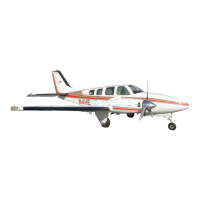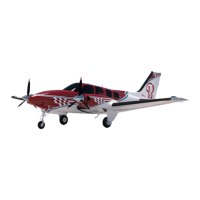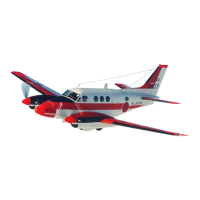
Do you have a question about the Beechcraft Musketeer Sport III A23-19A and is the answer not in the manual?
| Manufacturer | Beechcraft |
|---|---|
| Model | Musketeer Sport III A23-19A |
| Type | Light Aircraft |
| Horsepower | 180 hp |
| Seating | 4 |
| Service Ceiling | 14, 000 ft |
| Empty Weight | 1, 500 lb (680 kg) |
| Rate of Climb | 800 ft/min |
| Fuel Capacity | 50 gallons |
Emphasizes reading the handbook for familiarization and adherence to regulations.
Provides maximum ramp, take-off, landing, and baggage compartment load limits for different categories.
Defines forward and aft center of gravity limits based on weight for Normal, Utility, and Acrobatic categories.
Specifies approved maneuvers for different categories (Normal, Utility, Acrobatic) and limitations like slip duration.
Lists critical airspeeds for emergency descent, glide, and landing approach.
Provides procedures for engine failure during take-off ground roll and after liftoff/in flight.
Provides procedures for engine fires occurring in flight and on the ground.
Lists procedures for landing when engine power is lost, including airspeed and switch settings.
Warns against intentional spins in Normal/Utility categories and covers spin entry and recovery procedures.
Provides step-by-step instructions for recovering from spins, both intentional and inadvertent.
Provides a detailed checklist for preflight inspection covering cabin, fuselage, wings, landing gear, and nose section.
Lists power-off stall speeds in mph and knots for various angles of bank and flap configurations at different weights.
Provides take-off distances in feet for various conditions, including weight, wind, OAT, and pressure altitude.
Details cruise performance data, including altitude, RPM, fuel flow, true airspeed, endurance, and range.
Provides landing distances in feet for various conditions, including speed, OAT, and ground roll.
Explains the necessity of proper weight and balance computation for safe flight and introduces the Basic Empty Weight concept.
Presents graphical and tabular data for gross weight and moment limits for different categories.
Details the Lycoming engine specifications, operating speed range, controls, and instruments.
Introduces supplements for the 19A model approved for acrobatic maneuvers with specific modifications.
This supplement adds to or overrides the Pilot's Operating Handbook for UK-registered aircraft.
Explains FAR Part 91 and other regulations governing aircraft operation and pilot responsibilities.
Stresses the importance of an operational stall warning system and proper training for slow flight and stalls.
Highlights spins as a major cause of fatal accidents and emphasizes stall avoidance for spin prevention.
Discusses pilot responsibility for fitness, covering fatigue, hypoxia, hyperventilation, alcohol, and drugs.
Defines hypoxia, its causes, symptoms (including euphoria), and the importance of oxygen use at altitude.
Details the detrimental effects of alcohol on pilot judgment, skills, and reaction time, referencing FAR regulations.











